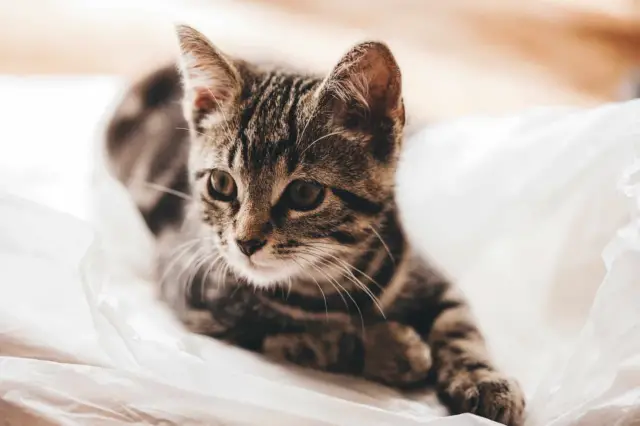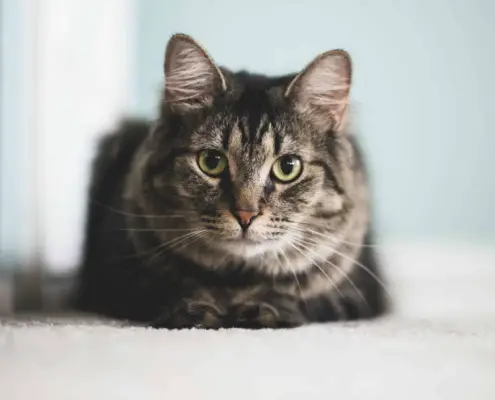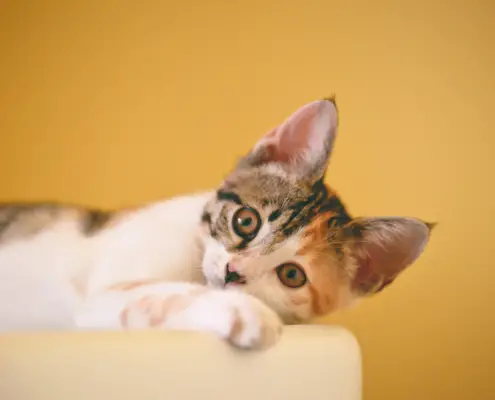
Cats have always been known for their inquisitive and curious nature. Whether it’s their relentless exploration of every nook and cranny in your home or their fascination with seemingly mundane objects, their curiosity is a defining characteristic. But why are cats so curious? What drives this behavior? In this article, we will delve into the fascinating world of feline curiosity and explore the reasons behind it.
The Evolutionary Origins of Curiosity in Cats
To understand why cats are so curious, we must first look at their evolutionary history. Cats, as natural predators, have been gifted with a keen sense of curiosity as a survival instinct. In the wild, curiosity serves as a way for cats to explore their environment, find prey, and avoid potential dangers. This instinct has been passed down through generations, and even though our domestic feline companions no longer need to hunt for their survival, their curiosity remains deeply ingrained within them.
The Benefits of a Curious Cat
Having a curious cat can be both entertaining and rewarding. Curiosity stimulates a cat’s mind and provides mental stimulation, which is essential for their overall well-being. A curious cat is more likely to be engaged and active, which can help prevent obesity and related health issues. Additionally, a curious cat tends to be more adaptable to new environments and experiences, making them better equipped to handle change and stress.
Understanding the Science Behind a Cat’s Curiosity
A cat’s curiosity is not just a random behavior; it has a scientific basis. Curiosity is driven by the release of dopamine, a neurotransmitter associated with pleasure and reward. When a cat encounters something new or interesting, dopamine is released in their brain, creating a sense of excitement and satisfaction. This positive reinforcement encourages further exploration and curiosity-driven behaviors.
Factors That Influence a Cat’s Curiosity
While curiosity is a natural instinct in cats, several factors can influence the intensity and frequency of their curious behavior. One of the primary factors is the cat’s individual personality. Some cats are naturally more curious than others, just like humans. Additionally, a cat’s environment plays a crucial role. A stimulating and enriched environment with plenty of opportunities for exploration will naturally encourage a cat’s curiosity.
The Role of Curiosity in a Cat’s Behavior and Play
Curiosity plays a significant role in a cat’s behavior and play. Cats use their curiosity to investigate their surroundings, understand their territory, and establish a sense of security. Curiosity also fuels their hunting instincts, prompting them to stalk, pounce, and engage in interactive play. Through play, cats satisfy their curiosity, sharpen their hunting skills, and maintain their physical and mental agility.
How to Encourage and Engage a Cat’s Curiosity
As cat owners, it is important to nurture and encourage our feline friends’ curiosity. One way to do this is by providing a stimulating environment. Create opportunities for exploration by setting up cat-friendly spaces with climbing structures, hiding spots, and interactive toys. Introduce new objects and scents to pique their interest. Another effective way to engage a cat’s curiosity is through interactive play sessions. Using toys that mimic prey and encouraging hunting behaviors can provide mental and physical stimulation.
Cat Toys and Activities That Stimulate Curiosity
There is a wide range of cat toys and activities specifically designed to stimulate a cat’s curiosity. Puzzle toys that require problem-solving skills, treat-dispensing toys, and interactive toys that mimic the movement of prey are excellent choices. Feather wands, laser pointers, and toys with hidden compartments can also keep a curious cat engaged and entertained. By providing these toys and activities, you can tap into their natural instincts and provide them with endless hours of entertainment.
Common Misconceptions About Curious Cats
Despite their endearing curiosity, cats are often misunderstood. One common misconception is that a curious cat is always seeking trouble or mischief. While they may get themselves into interesting situations, their curiosity is driven by a genuine desire to explore and understand their environment. Another misconception is that a curious cat is a bored cat. On the contrary, a curious cat is often an intellectually stimulated and content cat, as they are actively engaged with their surroundings.
Embracing and Celebrating a Cat’s Curious Nature
The curious nature of cats is deeply rooted in their evolutionary history. Their curiosity serves as a survival instinct and provides them with mental and physical stimulation. Understanding and nurturing a cat’s curiosity is essential for their overall well-being. By providing a stimulating environment, engaging them in interactive play, and offering toys that stimulate their curiosity, we can ensure that our feline companions lead fulfilled and enriched lives. So, the next time you see your cat embarking on another adventure, embrace and celebrate their inquisitive nature.
Encourage your cat’s curiosity today by creating a stimulating environment and providing interactive toys. Watch as they embark on exciting adventures and thrive both mentally and physically.
If you enjoyed my article, I would appreciate you sharing it with your network.

Sima Ndlebe
Sima writes for CatBuzz. He is interested in Cats, Health and Fitness, and Entrepreneurship.
Published: 13 November 2023




